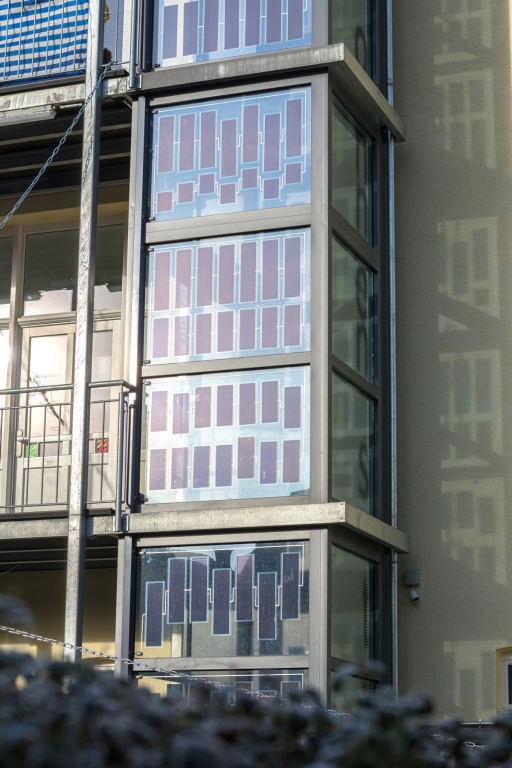Today, BELECTRIC OPV, market leader in organic photovoltaics (OPV), announced that its OPV product line OPVIUS, co-developed with Merck, a leading science and technology company, received the Innovation Award Architecture + Building at the BAU 2017 on Monday January 16th. The BAU is the world’s leading trade fair for architecture, materials and systems. It has proven itself as an efficient international contact and business platform for the construction industry.
Today, BELECTRIC OPV, market leader in organic photovoltaics (OPV), announced that its OPV product line OPVIUS, co-developed with Merck, a leading science and technology company, received the Innovation Award Architecture + Building at the BAU 2017 on Monday January 16th. The BAU is the world’s leading trade fair for architecture, materials and systems. It has proven itself as an efficient international contact and business platform for the construction industry. The exhibited, active solar films produced by BELECTRIC OPV under the brand name OPVIUS are using Merck’s latest generation of lisicon materials and were optimized for building integrated photovoltaics (BIPV). To meet the 2050 CO2 emission targets, nearly zero-energy buildings will become generally mandatory in the EU from 2021 on. To reach these new standards the use of renewables will be essential and BIPV, meaning active electricity generation in the building envelope, will be a key enabler.
Organic photovoltaics constitute an important and highly promising technology in the world-wide adoption and integration of photovoltaics (PV) into buildings. OPV is a fundamentally different approach compared to classical PV, and uses cost effective and eco-friendly roll-to-roll manufacturing. The printed OPV modules are thin and flexible laminates, which are easily added to a variety of construction materials and are compatible with standard glass lamination process. In addition, the larger inherent freedom of design and versatile adaptability also allow OPV to better serve functional and aesthetic demands from architects compared to classic PV technologies. Examples are the unique choice of colors, shapes and degrees of transparency, which strongly improve the prospects to comply with preferred façade designs. Furthermore, the flexible and light-weight nature of OPV allows the straightforward compatibility with upcoming membrane architecture and other light-weight solutions.
David Müller, Head of Marketing Photovoltaics at Merck, says, “Building integrated PV will play an essential role in future energy-efficient buildings, but existing solutions often do not satisfy the needs of architects. We are particularly encouraged by the decision of the jury of renowned architects to acknowledge OPV for satisfying both design and functionality."
Advertisement
“Organic PV is no longer an R&D topic. Together with further specialized partners, we have realized several reference projects with completely different requirements and setups in the last several years,” explains Mr. Hermann Issa, Senior Director of Business Development and Sales at BELECTRIC OPV GmbH. “Working with our partner Carl Stahl, we have integrated OPV active laminates into the Solar Trees for the German Pavilion at the EXPO 2015 in Milan. Additionally, with BGT (Bischoff Glastechnik AG) we have installed laminated OPV module in the glass façades of different buildings while together with Taiyo Europe we have integrated OPV in ETFE membranes. This shows the nearly endless possibilities OPV can offer."
Visitors to the BAU exhibition in Munich will find the OPV modules exhibited in Hall B2 Booth 101.


 Case Studies2 months ago
Case Studies2 months ago
 Art, Ad, or Alchemy2 months ago
Art, Ad, or Alchemy2 months ago
 Andy MacDougall2 months ago
Andy MacDougall2 months ago
 Columns3 weeks ago
Columns3 weeks ago
 Editor's Note2 weeks ago
Editor's Note2 weeks ago
 Marshall Atkinson2 weeks ago
Marshall Atkinson2 weeks ago
 Thomas Trimingham2 months ago
Thomas Trimingham2 months ago
 News & Trends2 months ago
News & Trends2 months ago










